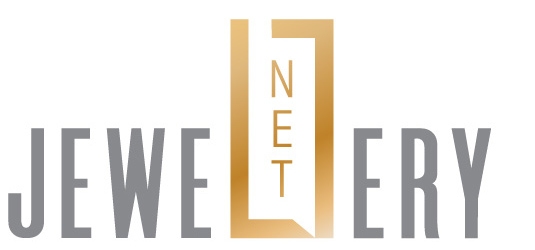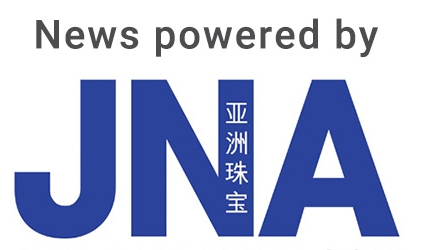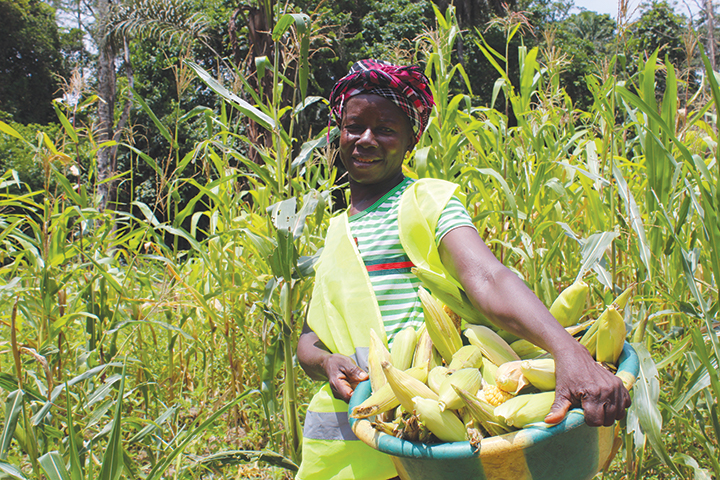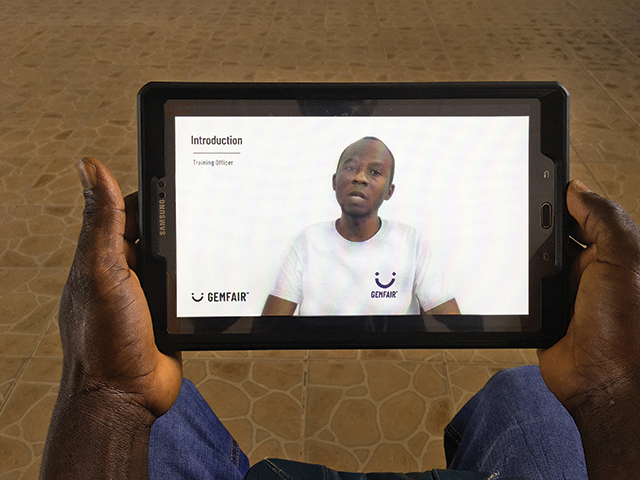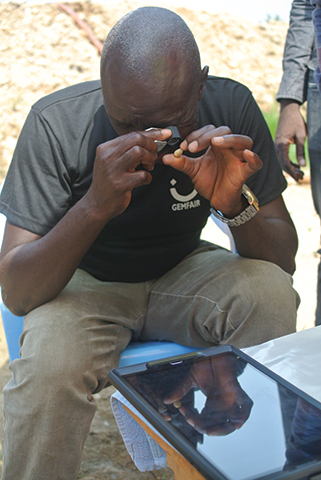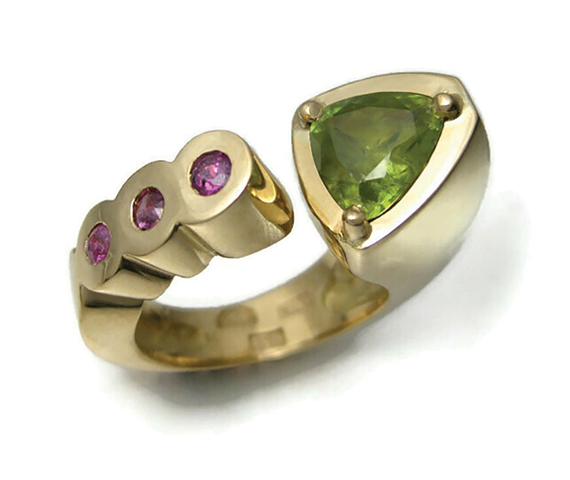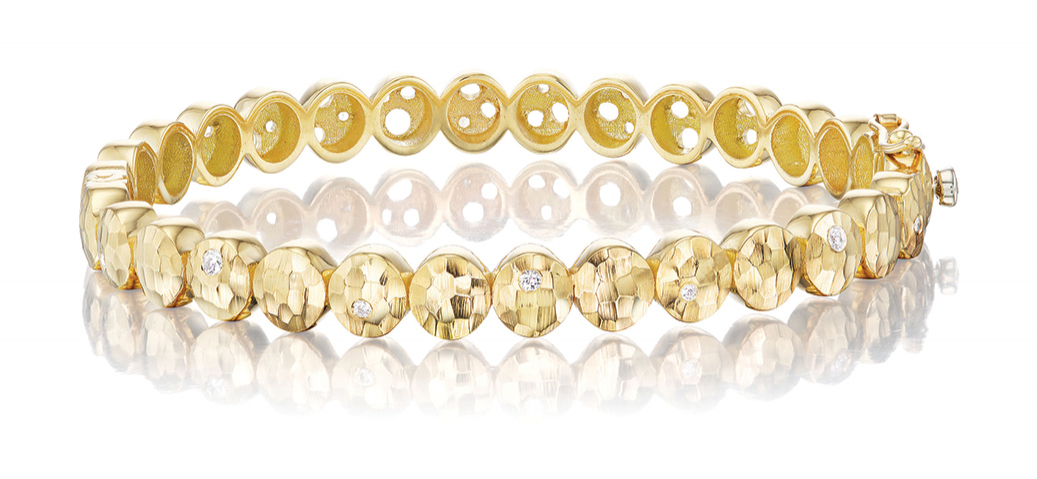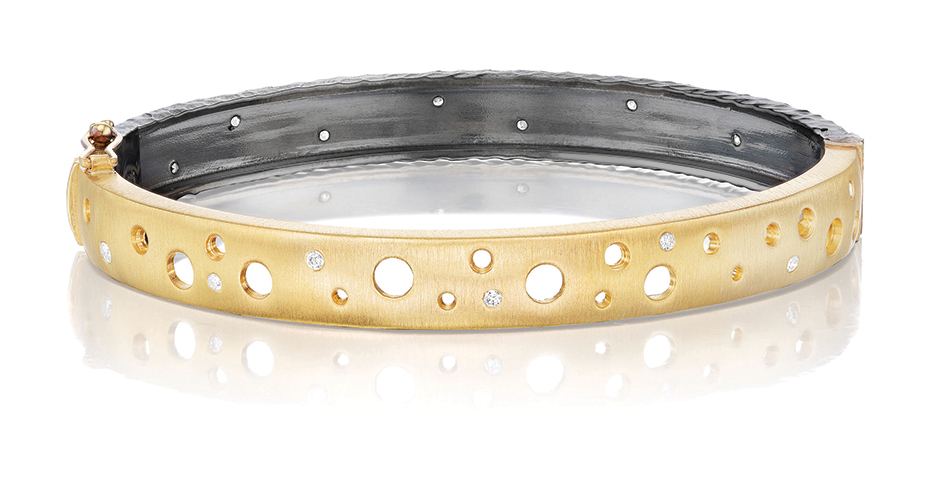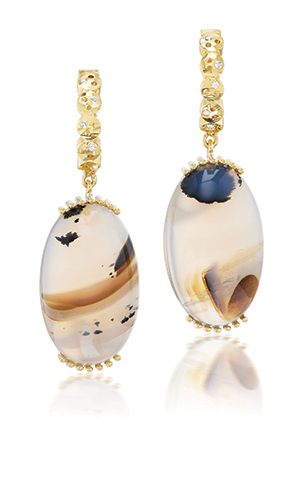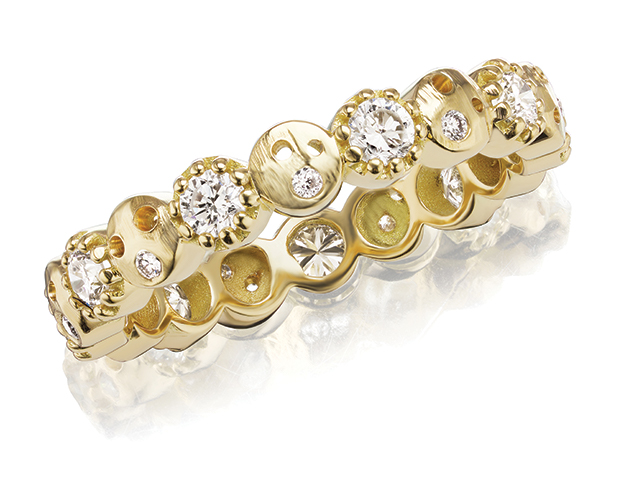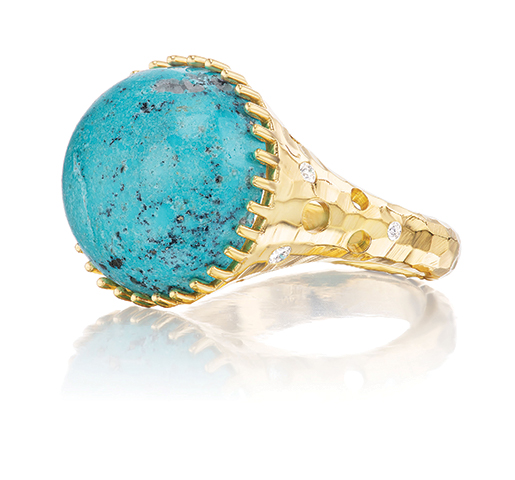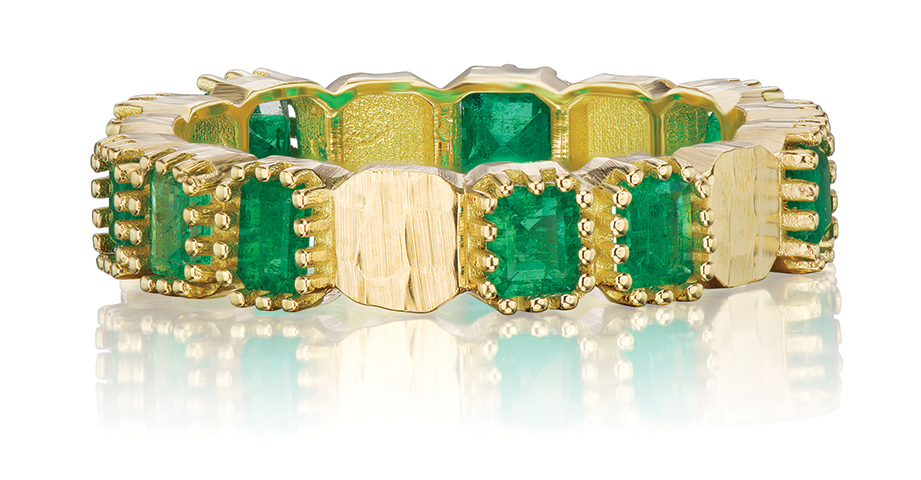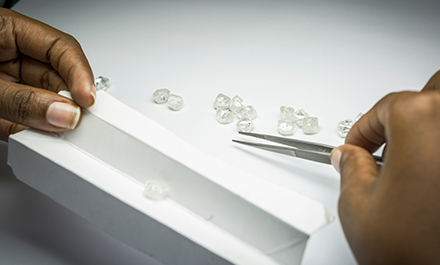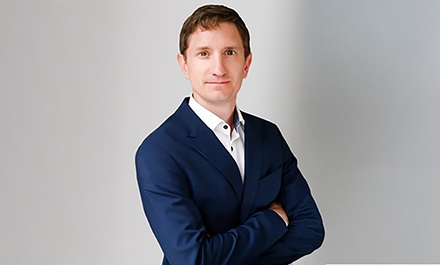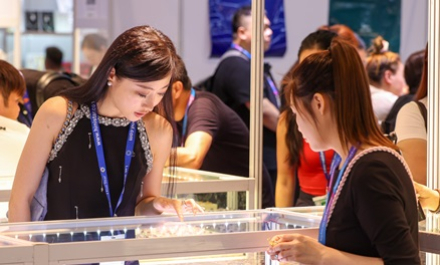The rise of conscious consumerism is putting Environmental, Social and Governance (ESG) matters into sharp focus. Despite continuing challenges of compliance and effectiveness, ESG initiatives in the gem and jewellery industry are gaining ground, thanks to industry bodies and corporate commitment.
This article first appeared in the JNA April/March 2023 issue.
ESG and sustainability have become a hot topic in the gem and jewellery world, spawning a plethora of initiatives, seminars and articles on the subject. Amid growing concern on the state of the environment, the jewellery sector is under pressure to not only behave ethically but to prove ROI for sustainability initiatives.
Environmental, Social and Governance (ESG) is a strategic framework that measures how businesses integrate these pillars in their operations and business model. It is part of a much larger umbrella of sustainability.
“Many people are surprised to learn that sustainability is not just about the environment. It includes global economic justice, human rights, labour relations and corporate social responsibility,” explained Barbara Wheat, executive director of Ethical Metalsmiths (EM). This ranges from a company’s carbon footprint, commitment to sustainability, transparency, and workplace culture to inclusion and diversity matters. It is an overall ethos that has been increasingly important in the gem and jewellery industry.
Socially conscious consumers
Today’s consumers are far more conscious of the ramifications of their purchase, holding brands responsible for progressing the world’s state of sustainability. Consumers shopping for high-end jewellery and watches are increasingly favouring brands that act responsibly, value diversity, and have a compelling and credible brand presence both online and offline. According to Feriel Zerouki, senior vice president for Corporate Affairs of De Beers Group, this macrotrend is only set to gather pace as it is being led by the younger generations who have a deep concern for social issues and who exhibit stronger preferences for sustainably sourced products.
Iris van der Veken, executive director of Watch and Jewellery Initiative 2030, added “We live in the era of transparency. The new consumer and the evolving regulations on transparency reporting will accelerate this movement. Millennials and Gen Z consumers now look first for a brand that they identify with, that they like, and that they want to wear. This younger consumer is looking for purpose and authenticity. In practice, this means companies have to act and to show measurable progress over time in all aspects of sustainability. Accessible, comparable, transparent data is key.”
Zerouki reported that in a recent De Beers Group research, 36 per cent of women and 39 per cent of Gen Z now specifically seek information on a brand’s ethical credentials when buying diamond jewellery. “Furthermore, 40 per cent of women overall said that knowing about the positive impact of diamonds on local communities would make them more likely to buy diamonds, while this proportion went up to 50 per cent for Gen Z consumers. This highlights a real opportunity for diamond brands to capture value differentiation by connecting clients to their diamond’s provenance and its positive impact,” she said.
Industry action
Luxury companies and associations are leading by example to inspire and promote their ESG goals to the wider jewellery community.
Geneva-based Watch and Jewellery Initiative 2030, founded by Kering and Cartier, is guided by the UN Global Compact’s Ten Principles and 17 Sustainable Development Goals. It aims to bring together watches and jewellery brands across the globe to begin a collective journey towards a low-carbon future and ensure the industry creates positive outcomes for the planet and for people along the value chain. Launched in October 2021, its members include illustrious brands like Gucci, Pomellato, Qeelin, Cartier, Chanel Watches & Jewellery, Boucheron, Swarovski, Rosy Blue and Dimexon, to name a few. The initiative focuses on three thematic priorities – building climate resilience, preserving resources and fostering inclusiveness.
Transparent measurement and disclosure of sustainability performance is now deemed to be an essential part of effective business practices and a necessity for maintaining trust in business.
The Watch and Jewellery Initiative collaborated with ESG Book, a global leader in sustainability data, research and technology to launch a focused workstream that includes large brands, manufacturers and suppliers to develop a solution on reporting based on international best practices. “Next step is piloting the framework and, depending on the learnings, we will explore how to scale up this solution. We are also working on a special education journey for SMEs in collaboration with United Nations Global Compact as we believe it is critical to bring everyone on the journey of sustainability,” Van der Veken revealed.
De Beers Group is invested in the future by ensuring all the diamonds it discovers create a positive impact for people and the localities where they are found.
“We have an immense responsibility to support our host countries and communities not just through employment, local procurement and tax payments but also by fostering wider socioeconomic development that supports sustainable, thriving communities and economies. We also understand that we have a unique opportunity as an industry leader to support enhanced ESG practices within the sector more broadly,” said Zerouki.
De Beers’ ESG strategy, called ‘Building Forever,’ consists of four key pillars, namely leading ethical practices, protecting the natural world, supporting thriving communities and accelerating equal opportunity.
As a result of the desire of consumers to know more about the origin of their diamond, De Beers has rapidly accelerated its industry blockchain traceability programme TracrTM to underpin consumer trust and aims for full traceability by 2030. It also pledges to help support the formalisation of the artisanal diamond mining sector. Zerouki said, “While we do not operate in this sector directly, it is an important source of global diamond supply and an even more important source of livelihood for millions of people, often in some of the poorest parts of the world. We want to help foster the sector’s development as a legitimate and trusted source of supply and will do this through the continued expansion of our dedicated GemFair artisanal and small-scale diamond mining (ASM) programme, currently operating in Sierra Leone.” GemFair aims to help formalise the ASM sector.
EM, founded in 2004, is a community of buyers, suppliers and emerging and established jewellery designers who are committed to fostering transparent, responsible and environmentally sound practices for all facets of the gem and jewellery industry. Through education, connection and action, EM’s mission is to inspire responsible jewellery practices.
“EM members are mainly smaller business entities such as bench jewellers and artisans who share the organisation’s vision of creating a jewellery industry where a beautiful product does not bear a human or environmental toll,” said Wheat. While they may not have the ESG challenges as larger companies, EM members may have an advantage since implementing sustainable business practices is easier to adopt and track as a small-business owner, she added.
EM recently launched an innovative jewellery recycling and community mining project, Radical Jewelry Makeover (RJM), an initiative developed to raise awareness of the connection between mining, metalsmithing, activism, collaboration and art.
Christina T. Miller Consulting and its team of professional consultants have been pioneers in this space since 2004. “We focus on the distinct activities brands can do to improve their own impacts. We are aiming for change, not protection from the cost of the issues,” said award-winning sustainable jewellery consultant Christina Miller who works with clients to address the environmental and social impacts of their business, as well as to consider how business practices (governance) should be changed to help meet goals in those areas.
“We go beyond helping our clients meet industry standards and certifications to making sure that the foundational ethical framework that they apply to their business translates through their sourcing and other business decisions,” she added. “We are realistic about the tensions between the cost of implementing ethical frameworks and the potential impact to shareholder profits, but we chose to focus on changing practices and on businesses that are committed.”
Fairmined options
The mining of gold is increasingly under scrutiny for its association with human rights abuses, and mercury pollution. With the Russia-Ukraine war, jewellers are also under pressure to distance themselves from gold and diamonds coming from Russia.
Conflicting assertions about the positive impact of recycled gold has also been denounced since much of the illegally mined gold is being laundered as recycled gold and subsequently enters the supply chain. This has prompted a shift towards Fairmined gold, a label that certifies gold from empowered, responsible artisanal and small-scale mining organisations. Wheat shared, “Some jewellers who are EM members offer a choice to clients and let them choose. The cost of Fairmined is sometimes prohibitive for the client, but by providing information about Fairmined, they are able to influence consumer choices.”
Increasingly, jewellers and independent designers are seeing value in collaborating with mining communities that are committed to ethical and sustainable practices. They are ever more aware of where their raw materials come from and demand full transparency. Polly Wales, Pippa Small, Ming Lampson, Dana Bronfman, and Saskia Shutt are among the brands that have chosen to use certified metals extracted by miners working on a small scale.
Miller commented, “Fortunately, we are seeing progress in gold mining. The Initiative for Responsible Mining Assurance (IRMA) for industrial-scale operations and the Fairmined Standard for artisanal and small-scale mines have helped gain more insight into what the ground conditions are and where improvement still needs to be done. By encouraging jewellers to purchase from artisanal and small-scale miners with certifications like Fairmined and Fairtrade, jewellery businesses can support miners and verify their gold is responsibly produced. However, this does not mean zero negative impact.”
Prevailing challenges
As the narrative surrounding global climate change continues to mount and consumers increasingly want to align their purchases with their values, brands are responding by making sustainability commitments, setting climate goals and vowing to minimise their environmental impact. However, as consumer interest continues to grow so has the act of greenwashing, which Miller defines as the practice of advertising or misleading consumers into believing a product is more sustainable than it is or making environmental claims that cannot be substantiated.
“There is a lack of consensus on the definitions of commonly used marketing terms and a lack of data around how to measure and compare the GHG emissions of recycled gold versus newly mined gold, or the carbon impacts of lab-grown diamonds versus newly mined diamonds. Environmental claims are being made that are challenging to substantiate," she explained.
The best way to combat greenwashing is for the general public to ask the right questions. “If a company makes a public claim, they should be able to provide proof of that claim and answer questions that may arise from that claim. If your questions are met with vague answers, marketing jargon or no answer at all, that should raise suspicion of greenwashing,” Miller said.
Tackling greenwashing is also one of the topics EM addresses on a regular basis. “Members share information via our member forum, which helps them to recognise greenwashing and avoid making product claims or statements that are misleading, unsubstantiated and even false, as is found in the market today," said Wheat.
Noting that trust is based on responsible actions, Van der Veken said companies need data transparency with detailed precision along the entire value chain to understand their operations better. “Our aim is to shape a credible ESG framework based on international best practice. Our first kick off workstream has started and we will report on our progress accordingly. Getting accurate, quality ESG data is a must. This is a process that takes time and will take a lot of education throughout the supply chain,” she disclosed.
Gemmologist and veteran gem explorer Yianni Melas strongly believes in giving back to the communities through education. His goal is to work with groups that focus on education versus ethical certification.
He said, “Traceability does not give back to the source. Education does. Anyone giving back or participating in projects that give back in education related to the gem and jewellery industry is helping with sincere ‘giving back’ beneficiation. Our industry should focus on setting up education for self-sustaining ecosystems of everything related to jewellery at the mines. This includes education for cutting gems, designing, casting and manufacturing and especially gem setting.”
Diversity and inclusivity are also becoming significant on the ESG agenda, as businesses strive to reflect their customers and communities.
There has been a host of new associations, initiatives, platforms and programmes to address women’s work and BIPOC (Black, Indigenous and People of Colour) members in the jewellery industry.
These range from governing bodies like CIBJO (The World Jewellery Confederation), Women’s Jewelry Association (WJA) and Diversity Action Council (DAC) to independent initiatives launched by designers such as the Bijules Incubator, Black in Jewelry Coalition and Tiffany Atrium and retailers like Greenwich St. Jewelers and MatchesFashion who are paving the way by working with designers from diverse backgrounds and running programmes that focus on mentorship and education.
Many of these platforms offer a transparent voice and open conversation about the challenges of navigating through the industry.
